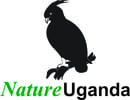Important Bird Areas

What is an Important Bird Area (IBA)?
The IBA concept aims to identify and protect a network of sites critical for the long term viability of wild bird populations. This is achieved through conservation advocacy and action to protect the sites. IBA monitoring is one tool that is used to inform decision making or improve site management. Monitoring here is used to mean the repeated collection of information over time in order to detect changes in one or more variables. Currently, monitoring in IBAs is being conducted by lead government agencies and NGOs. This type of monitoring includes: waterbird populations, habitat condition, terrestrial bird populations, mammal populations and climatic variables.
Why monitoring is important
Locally and nationally, this is done to detect and act on threats in good time. Assess the effectiveness of conservation efforts and provide information on biodiversity trends. The monitoring programmes have schedules but annual IBA monitoring is the target. To ensure that biodiversity and its habitats are conserved in a good way, we need to monitor these habitats in order to understand:
- How the abundance of biodiversity (e.g. birds species) is changing with time
- How the structure and quality of their habitats are changing with time
- How land use is changing with time
- How forest structure is changing with time
- How forest birds respond to change in forest structure
- How regeneration affects the forest and forest specialists
Monitoring also provides a timely warning so that action can be taken. In some instances, it is a platform for see if conservation interventions are having any positive effect. It may also be used to build skills as people participate in monitoring. In fact some monitoring schemes are designed to collect quantitative data that is required to shed light on causes of change or simplify complex processes. The product of which are indices that are understood by politicians and experts alike for example understanding how state (condition) of habitat is affected by different pressures (threats) is important. And how responses (conservation actions) help reduce pressures are simple interpretations.
What can we monitor?
- We can monitor physical condition of the site: This could involve for example counting different plant species in the forest or measuring the height of all hardwood species.
- We can monitor biodiversity (wealth of life): This could be the population of threatened birds, mammals, and butterflies etc that are important to the site being monitored. It is possible to measure these aspects directly or indirectly.
- We can monitor indicators of status and trend relevant to bird populations for which the sites are listed. This is specifically done by measuring state (condition), pressure (threats) and response (conservation actions).
Why birds are used in IBA monitoring
- Widespread
- They are diverse
- They are easy to survey
- They have the aesthetic appeal and many people watch them as a sport or for fun.
- They are better known than other organisms.
Birds have been shown to be effective indicators of biodiversity richness in other animals and plant groups. The IBA network is defined by the avifauna it holds, but the conservation of these areas have been shown to protect up to 87% of the biodiversity. Therefore Important Bird Areas (IBAs) are essentially Key Biodiversity Areas (KBAs).
Related Posts
Recent Posts
NatureUganda Undertakes Review and Update of the Murchison Falls–Albert Delta Ramsar Site Management Plan
NatureUganda hosts nature walk to promote conservation and tourism in Bugoma CFR
Site Profiling of Mabamba Bay and Musambwa Islands: Opportunities for Biodiversity Conservation and Climate Resilience
All Categories
- Conservation and Development (36)
- Eco-tourism (6)
- Education and Awareness (14)
- Forests (12)
- Gorvenance (1)
- Habitats (13)
- membership (2)
- Nature walk (3)
- People (10)
- Projects (13)
- Public dialogue (9)
- Research and Monitoring (22)
- Sites (6)
- Species (13)
- Wetlands (16)
- Wildlife (10)




